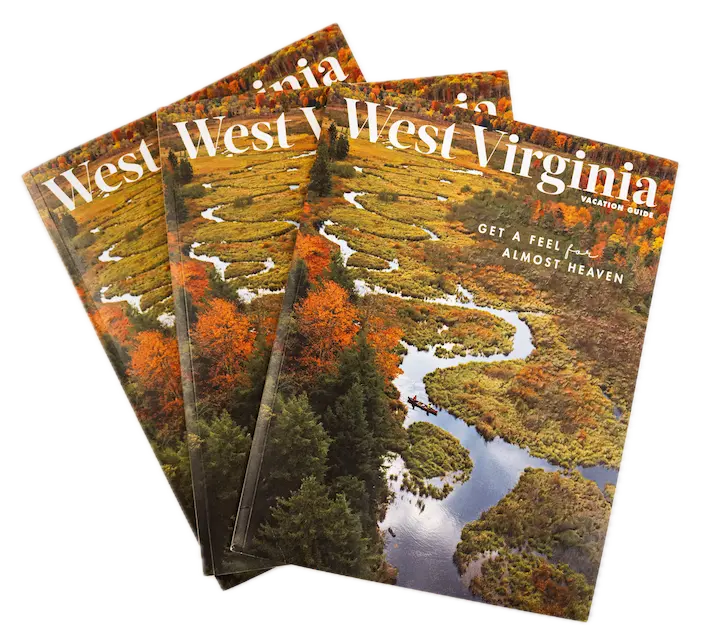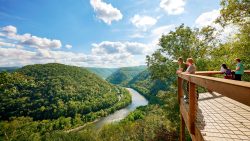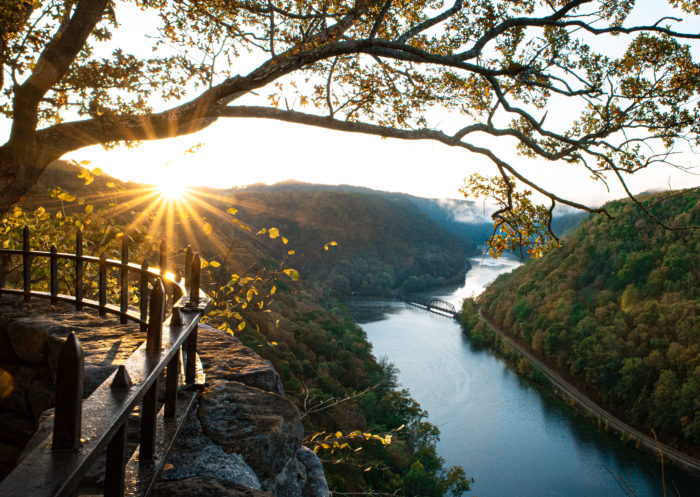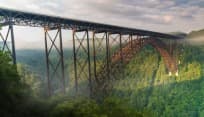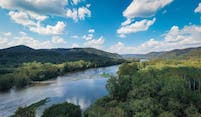6 things you didn’t know about WV’s coal heritage
From the boom years of coal mining, to some of the most iconic labor movements in the nation, this black, shiny mineral has been central to West Virginia’s history.
You can visit historic sites and museums along West Virginia’s Coal Heritage Trail. But, before you do, check out these interesting facts that you may not have known about the Mountain State’s most famous natural resource:
1. Coal was First Identified Before We were even a State
People have known about coal for thousands of years; in fact, ancient Romans even used it as a jewelry stone! But the black stuff wasn’t really a hot commodity until the birth of the steam engine in the early 1700s, and later the rise of railroads and factories in the late 1800s.
Even though early Native Americans and European settlers in the Appalachians did not use coal too much, they still knew about it. In 1742, an English explorer identified a “great plenty of coals” along a river that would come to be called the Coal River.
Later, in the 1780s, Thomas Jefferson also mentioned the existence of the mineral in his important book Notes on the State of Virginia.
2. Coal was not West Virginia’s First Major Mineral Resource
Before the coal boom, the area that would become West Virginia had a salt boom.
Before refrigeration, salting and brining was the main way to preserve food, and the Kanawha River Valley had huge underground deposits.
Salt was key to the Civil War history of West Virginia, and the eventual creation of our state. The Union capture of WV salt mines was a huge blow to the Confederacy, who desperately needed it to preserve meat for southern troops.
Early salt mines would dig shafts into the river beds, inject water, then pump out the briny liquid. But how would they turn this salt water into pure salt? By boiling it, and it turned out that nearby coal deposits made the perfect for fuel for this.
J. Q. Dickinson Saltworks still hand-harvests our rich salt deposits, crafting some of the nation’s finest artisanal salts.
3. Our Rivers were Essential to Coal Transportation
West Virginia’s large flatwater rivers make barge transport to major steel factories very convenient even today, and it’s been that way for more than a century.
But what about our whitewater rivers? You can’t transport coal by barge down class V rapids, can you?
By the 1880s, mine owners were investing in railroads to get coal out of the rugged mountains and down to open river valleys. You can still see transition points from mountain mining to valley industry at places like Kanawha Falls, where railroads met barges.
But these railroads still mostly followed the rivers. Railroads run along the New, Gauley, Meadow, Greenbrier, and others. The river gorges were natural avenues for railroads, and meant easy access to coal deposits in the canyon walls.
4. Coal is the Main Reason for West Virginia’s Diverse Ethnic Heritage
West Virginia is incredibly diverse culturally. Pepperoni Rolls and The Feast of the 7 Fishes in Fairmont hearken to Italian heritage, and our chocolate and Fasnacht festival come from Switzerland.
Much of West Virginia’s diversity can be traced back to the Europeans or African Americans who came here to work in coal mines or railroads during the late 1800s.
5. Famous U.S. Industrialists Dominated West Virginia Coal Production
The rise of industrial capitalism in the late 1800s was deeply tied to West Virginia coal, and most of the heavy hitters had a hand in this.
J.P. Morgan and Andrew Carnegie bought coal mines for vertical integration– the practice of owning every step of the industrial process. They ship the mineral from their own mines on their own railroads, and send it up to power their own steel mills. It cut costs and expanded production every step of the way.
Carnegie also extended his well-known philanthropy to West Virginia, building at least 4 libraries and 1 beautiful concert hall in Lewisburg. John D. Rockefeller owned most of the mining town of Nuttallburg, which is abandoned, but beautifully preserved for visitors.
The dominance of these industrial barons has even crept into modern pop culture. 2 industrial hubs along the Kanawha River, Smithers and Montgomery, became the names of a nuclear power magnate and his assistant in The Simpsons! Intentional? Maybe…
6. Mountain State Coal Dominated the U.S. for most of the 1900s
Coal really started taking off for the Mountain State in the 1900s. By 1920, we were churning out nearly 100 million tons of the mineral per year. From 1927 to 1973, West Virginia produced more coal than any other state.
West Virginia coal was key to the U.S.’s rise in dominance during the 20th century. It was behind our military success during the 2 world wars– powering battleships and producing tanks, planes and guns. It powered the factories that were so successful after WWII that blue-collar workers could afford homes, families and 2 cars. Even now, we’re still exporting it to other powerhouses like China.
West Virginia is still second only to Wyoming in coal production.
This post was last updated on July 21, 2020
